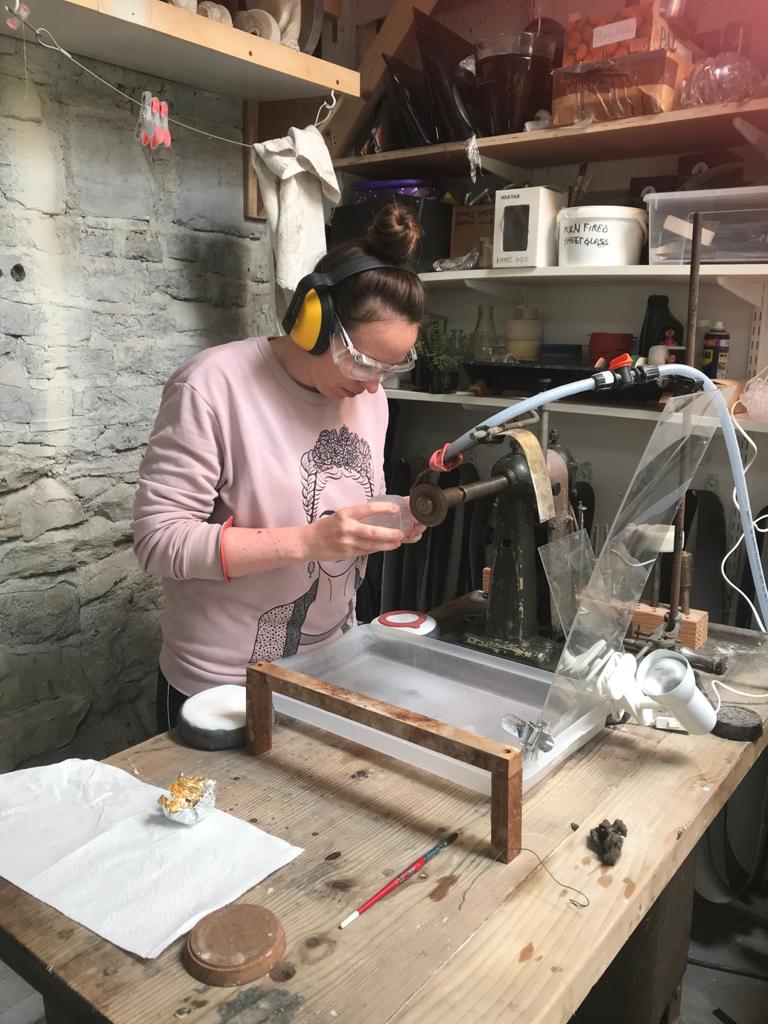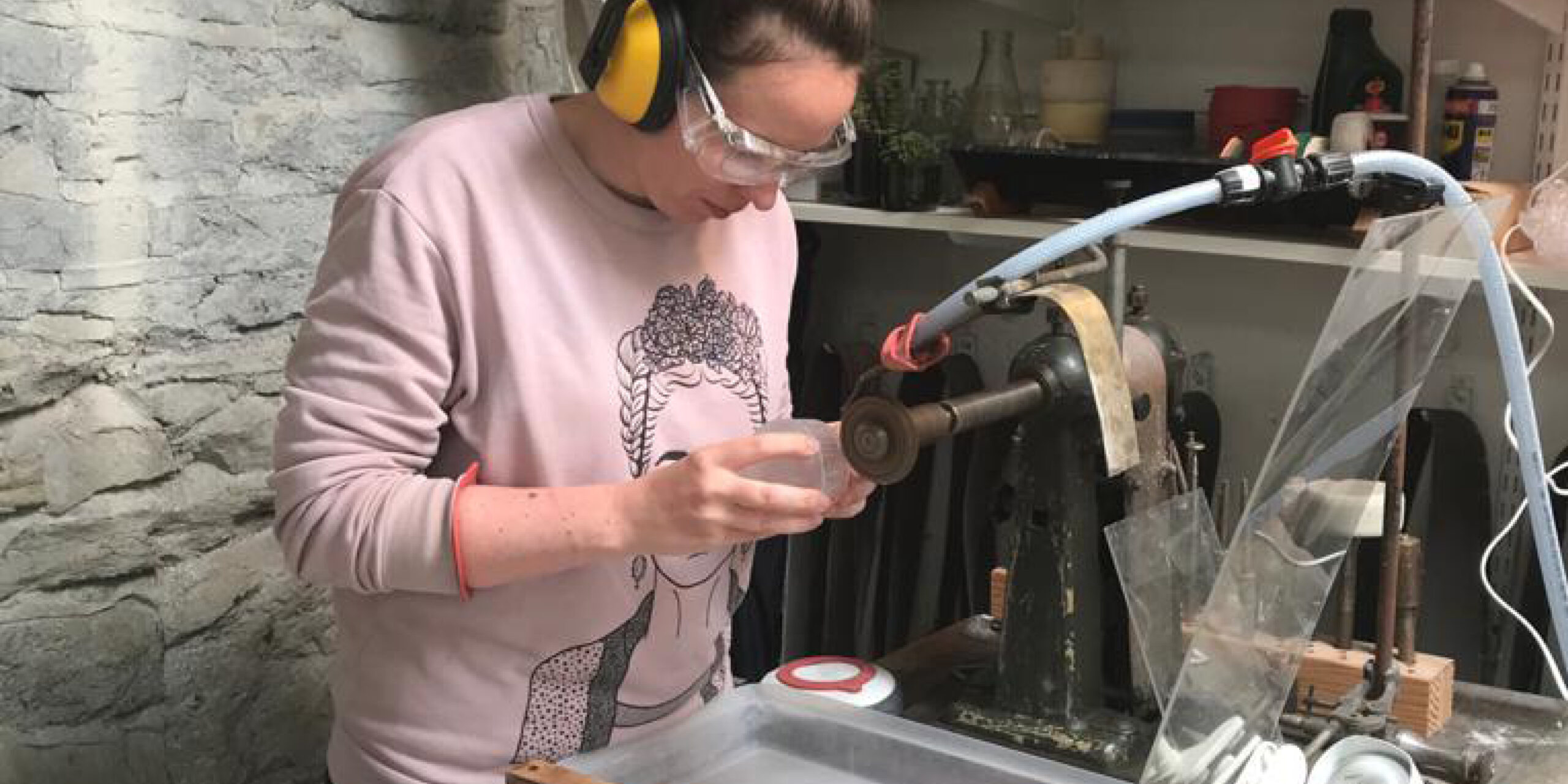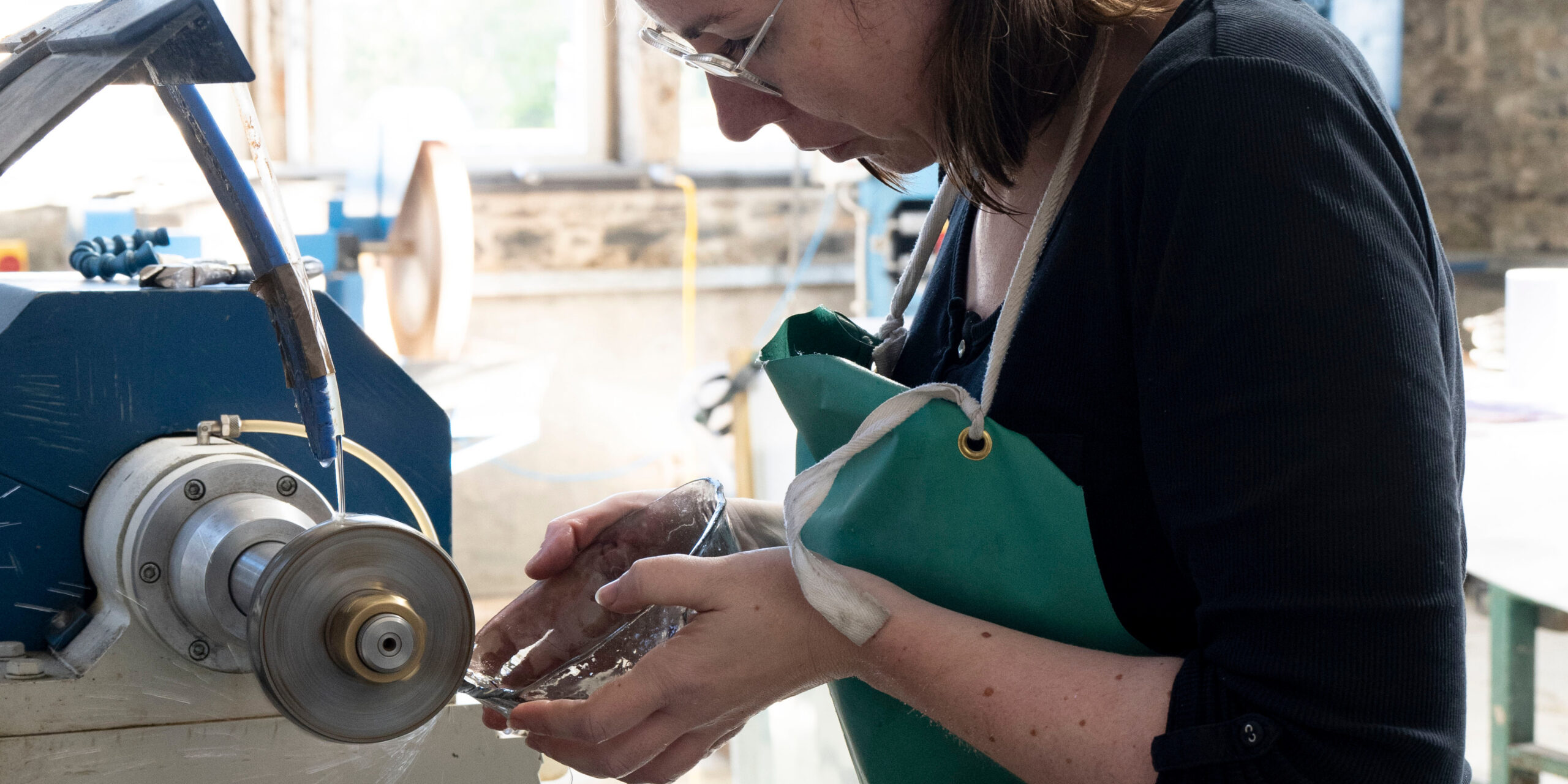Properties & Qualities
Application
Art Sample Making Sculpture
Sample Information
Date of creation
2020
Dimensions
5cm (H) x 5.5 cm (diameter)
Culture & Context
Diamond wheel engraving is known as a ‘cold’ technique. Unlike glass blowing or kiln work the glass is modified in its solid state. Like many glass techniques it is quite ancient and has been found on archeological finds dating to Roman times. More recently Venetian and Bohemian glass makers began to revive the techniques of engraving in the 16th centuries. In Ireland cut glass is synonymous with the Waterford Crystal factory which produced particularly fine examples of cut crystal glass.
The examples shown are part of a series of works entitled ‘Seven Sisters’ these pieces were inspired by scrying and other divination techniques. They are small human attempts to see into the future and grasp at the unknown. They look at the internal need for certainty and stability. Representing a form of knowledge that is often disregarded by mainstream institutions and that is lost to most of us. The marks are taken from ancient sites and burial goods, where the meanings of such marks have been lost. Their messages are broadcast but not understood.
Process & Production
For this process a diamond wheel with the correct profile is chosen, the profile of the wheel determines the shape of the cut on the glass. These wheels are used on a lath and are fed with water to keep the glass from cracking while it is being worked.
The pattern is marked out on the glass surface in water proof ink. Then it is carefully cut with the wheel. This process can be quite time consuming but can produce very interesting surface finishes.
Credits
Craft Maker
Fiona Byrne
Library Contributor
National College of Art & Design Ireland
Photographer
Michael Dodds Mowenna Kearsley Roisin De Buitlear


















